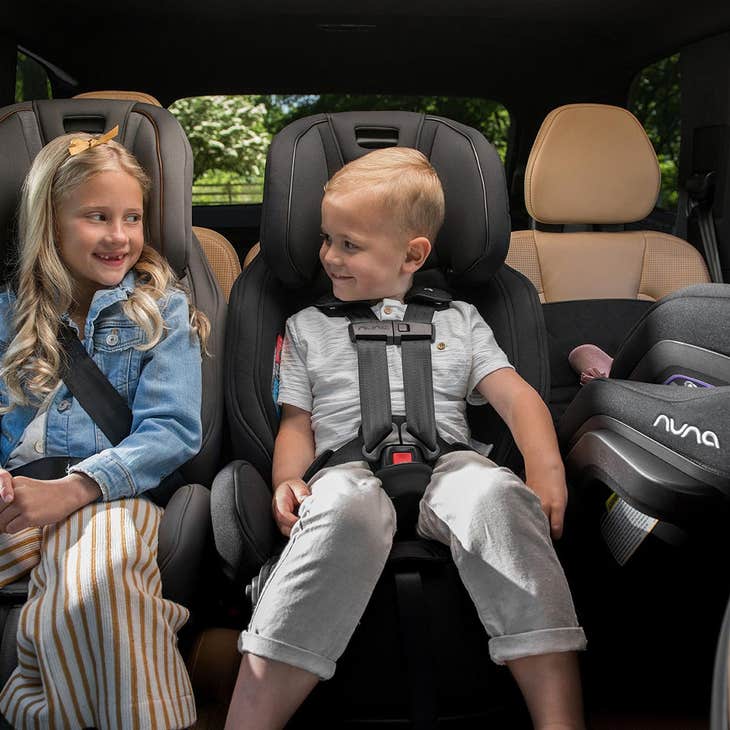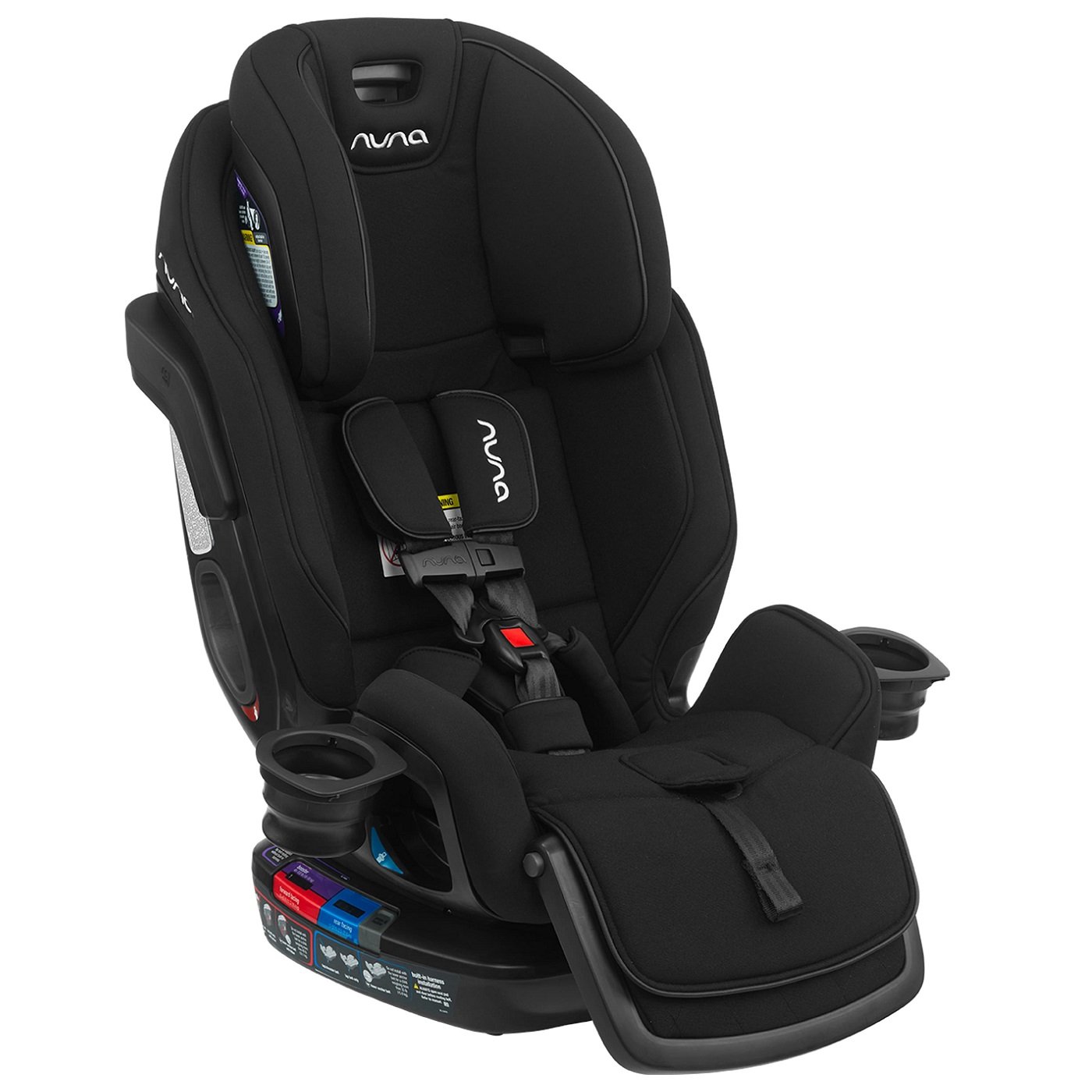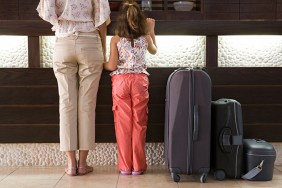Here’s a scary fact: Nearly 40% of the children under the age of 4 killed in crashes are not in a car seat or restraint of any kind – this includes children in the vehicle that has a car seat and it’s NOT being used. “Many caregivers make the mistake of ignoring the dangers involved in not using the car seat when it’s a ‘short ride,'” says Bob Wall, Nuna’s global car seat safety advocate. Even more disturbing is the fact that Wall says that car seat inspections across the country show that well over 80% have some type of misuse detected. “Some of these mistakes are small and have very little impact in the overall safety of the child, but some are quite dangerous and pose a serious risk to children. Even a combination of small, seemingly insignificant issues, could compound during a crash and possess a great risk to your child.”
What are the main mistakes parents make when installing a car seat?
Some of the main mistakes seen, according to Wall, include using the wrong seat for the child and/or facing the child forward facing too soon. “Sometimes we also see notable installation errors that could be life threatening like the seat being installed incorrectly loose or not locked into the vehicle correctly. Not following the manufacturers instructions is also a major concern. The car seats instructions and the customer service staff should be the first resource for correct information about the car seat’s correct use. Another issue has been the dissemination of inaccurate information on social media. New parents are very good at doing their homework before their baby arrives, but the information at times can be misleading or incorrect if the source is unknown.”

There are some truly amazing options on the market that are practical, adhere to the highest level of certifications and are easy to install like the Nuna EXEC all-in-one car seat that converts between rear, forward facing and booster modes, but no matter what option you opt for there are key things to look for.
Read on to see the 5 basic rules of Correct Car Seat use, according to Wall:
Selection:
Selecting the appropriate seat for the height, weight and physical developmental stages of your child is the most critical in the process. Starting with the right seat minimizes risks to your child.
Pick the one that:
- Fits the child
- Fits the vehicle
- Easy to install on every trip
Select the car seat, booster seat, or seat belt that is right for the child’s age, weight, height, and developmental needs. The right car seat or booster seat fits the child and the car and will be used correctly every trip – every time. Not only will the child ride as safely as possible, a child who is secured during every ride will establish a foundation for a lifelong habit of seat belt use every time the child travels.
- Select a car seat with an adjustable harness height to offer options for rapidly growing children.
- Some car seats have adjustable positions for crotch straps for a better fit as the child grows.
- Booster seats keep the lap belt from causing injury to a child’s abdomen and keeps the shoulder belt in the proper position to provide upper body protection.
- Seat belts can be used to safely secure children when the lap belt stays low and snug across the upper thighs and the shoulder belt crosses the center of the chest and shoulder.
Selecting the correct child restraint type is the first step in making sure a child is safe in the vehicle. Be aware of height and weight limits as a child grows. When in doubt, contact a child passenger safety technician in your community.
Direction
For the best possible protection, secure children in a rear-facing car seat until 2 years of age or until the maximum weight or height allowed by the manufacturer of the car seat.
Rear-facing:
- Always secure children younger than 1 year of age in a rear-facing car seat.
- The child should remain in a rear-facing car seat to the highest weight or height allowed by the manufacturer’s instructions.
- If a child outgrows a rear-facing only car seat before age 2, use a rear-facing convertible car seat to the highest weight or height allowed by the manufacturer.
Forward-Facing:
- When children outgrow a rear-facing car seat, secure them in a forward-facing car seat with a harness for as long as possible, up to the highest weight or height allowed by the manufacturer of the car seat.
Rear-facing:
- The shell of the car seat absorbs the forces of the crash across the entire head, neck and back.
Forward-facing:
- The harness absorbs the forces of a crash and holds the child in the vehicle.
Misuse: Turning your child forward-facing too soon: Turning a child forward-facing before age two can result in head, neck or spinal cord injury in a crash due to their undeveloped bodies.
- Keep children in a rear-facing car seat until they reach age 2 or the maximum weight or height limit recommended by the car seat manufacturer.
- Rear-facing car seats distribute the forces of a crash across the entire head and body of the child. The shell of the car seat absorbs the crash forces.
- Rear-facing car seats support the head, neck and back. Traveling rear-facing is safer than forward-facing.
- Children in the second year of life are less likely to die or be seriously injured in a crash if secured rear-facing compared to forward-facing.

Location
All children younger than age 13 should ride in a back seat.
- Never place a rear-facing car seat in the front vehicle seat if the passenger-side front air bag is turned on.
- Read and follow car seat manufacturer’s instructions and the vehicle owner’s manual to determine the effect of side-impact airbags.
Install the Car Seat in the Right Seating Position in the Car
- There may be many seating positions in a vehicle, not all are suitable to secure a car seat.
- The car seat manufacturer instructions and/or the vehicle owner’s manual may not permit securing a car seat in certain seating positions.
- Some vehicle manufacturers do not allow a car seat to be secured in the center seating position in a back seat.
- Select a seating position that allows for correct use of the car seat following the car seat and vehicle manufacturer’s instructions.
- Weight limits on lower anchors and tether anchor locations may affect the seating position choice.
Misuse: Securing a child in the front seat prematurely:
- Never place a rear-facing car seat in front of an active front seat air bag.
- If it is necessary to secure a forward-facing car seat in the front seat, be sure to turn the air bag off or move the vehicle seat back as far as possible, away from the air bag.
Installation
Always read and follow the car seat instructions and vehicle owner’s manual.
- Car seat should be secured with the vehicle seat belt or lower anchor connector routed through the correct belt path.
- Seat belt/lower anchor connector is tight and locked in place allowing no more than 1-inch of side-to-side movement when pulled at the belt path.
- The installation should be checked for tightness each time the car seat is used.
- Always use the tether when installing a car seat forward-facing with the seat belt or lower anchors.
Installing a Car Seat the Right Way
- Read and follow the car seat manufacturers’ instructions for the correct rear-facing or forward-facing angle position; reclined, semi-reclined, or upright angle.
- Secure the rear-facing car seat with the vehicle seat belt or lower anchors.
- Secure the forward-facing car seat with the seat belt or lower anchors and the tether, following manufacturer’s instructions.
- Secure a booster seat with a lap and shoulder belt.
General Method to Obtain a Tight Installation
- Place the car seat on the vehicle seat in the correct direction.
- Thread and tighten the seat belt or lower anchor connectors through the correct belt path.
- Buckle and lock the seat belt or attach the connectors to the lower anchors in the vehicle. Tighten to ensure the car seat does not move more than one-inch when checked at the belt path.
- Attach and tighten the tether with the seat belt or lower anchor connectors on a forward-facing car seat.
Misuse: Car seat not installed tightly enough:
- Car seats will not stay in place if the seat belt or lower anchor connection is too loose. A loose car seat increases movement in a crash and the likelihood a child will be hurt in a crash.
- Make sure the car seat does not move from side-to-side or front-to-back more than 1-inch when pulled at the belt path.
Harness: Always read and follow the car seat instructions
- Harness straps are snugly secured to hold the child in the car seat during a crash.
- A snug strap should not allow any slack. It lies in a relatively straight line without sagging. It does not press on the child’s flesh or push the child’s body into an un-natural position.
- Harness retainer clip is positioned at armpit level.
Booster Seats and the Five Step Test
- Does the child sit all the way back against the auto seat?
- Do the child’s knees bend comfortably at the edge of the auto seat?
- Is the lap belt touching the top of the thighs, not the tummy?
- Is the shoulder belt centered on the shoulder and chest?
- Can the child stay seated like this for the whole trip?








